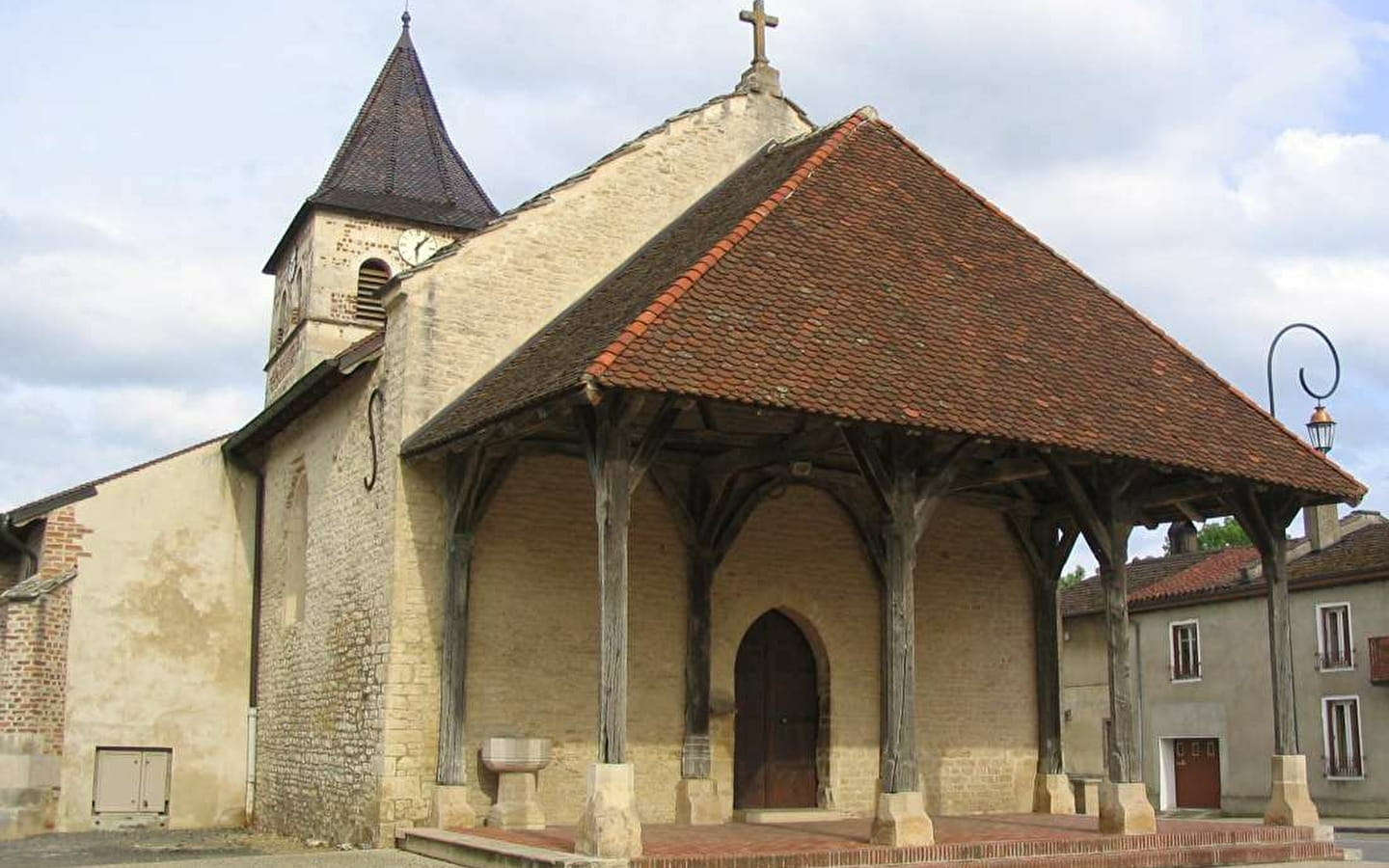
Eglise de Saint-Nizier-le-Bouchoux
Nizier, a Christian martyr of the 2nd century, who became a saint, has since been venerated in Lyon and its region. Two communes in the Ain region bear his name.
In Saint-Nizier le Bouchoux, ancient documents attest to the presence of a church as early as the 11th century. In the 13th century, it is mentioned as a dependency of the Benedictine abbey of Saint-Pierre de Gigny (Jura) and a priory is associated with it.
From the Romanesque building (12th century), the small openings remain, which are remarkable on the outside. The galonnière (canopy) has been dated to 1391-93, following a dendrochronological study, and the roof structure is from the same period. Like most of the bell towers in the Ain, this one was destroyed during the Terror in 1794 and rebuilt ten years later. It is covered with glazed tiles from Pontigny.
Inside, the modifications of the Gothic period are clearly visible, in particular the ogival arches giving access to the north side chapels (to the left of the entrance). The first is the chapel of Saint-Jean Baptiste and the second is the chapel of Saint-Georges, also known as the chapel of the Lords of Saint-Nizier. There is a remarkable hagioscope which used to allow the lord to follow the service from his chapel, to which he had private access from the outside (walled door perceptible in the corner).
Continuing on, we find the chapel of Saint Bartholomew which forms one of the arms of the transept. The same applies to the south side, with the chapel of Saint Anthony, which is also the oldest of all. In 1993, during restoration work, a sculpted altarpiece, a limestone monolith embedded in the wall and representing the Resurrection, was uncovered: seven figures carved at the end of the 15th or beginning of the 16th century.
- French
- Pets not allowed
From 01/01/2025 to 31/12/2025






